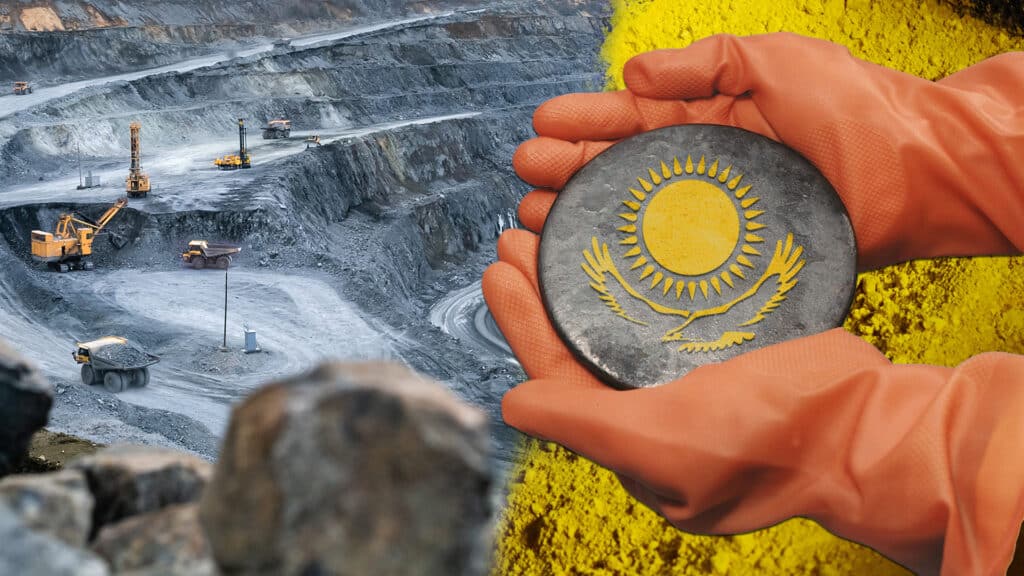Cameco warns that Kazakhstani uranium may become less attractive if the country raises taxes

According to Tim Gitzel, CEO of Cameco, a large uranium producer from Canada, uranium production in Kazakhstan could become less attractive once a new calculation and collection methodology for the Mineral Extraction Tax (MET) is introduced in 2025. The prime cost for uranium production in Kazakhstan has long been considered low but may rise after the tax reform. If this happens, Kazatomprom will lose its competitive advantage. Gitzel commented on these changes during his press conference on the Cameco Q2 results.
Currently, the 6% MET rate for uranium production is not differentiated in Kazakhstan. In 2025, the rate is expected to be raised to 9%. The tax will then be differentiated from 4% to 18% starting in 2026, with the size of the tax depending on production volume (ranging from 500 tons to 4,000 tons).
«If it [the MET] remains as currently formulated, preliminary conclusions indicate that production costs in Kazakhstan would be similar to northern Saskatchewan operations, depending on the assumptions used for uranium price, production profile and exchange rate,» Gitzel said.
Kazatomprom is the largest uranium producer in the world, controlling 20% of the market and competing with Cameco. On one hand, the Canadian company is interested in high production costs in Kazakhstan to repel its main competitor from the market. On the other hand, Cameco is interested in low production costs because it operates a joint venture with Kazatomprom. Cameco controls a 40% share in Inkai, which produces uranium in the Turkestan region of Kazakhstan. According to its 2023 financial statement, the joint venture stated that Kazatomprom controls a 60% stake in the company. This document is available on the website of the Depository of Financial Statements under the Ministry of Finance.
Inkai reported a decline in its uranium output in the second quarter of 2024 due to disruptions in the sulfuric acid supply earlier this year. Inkai continues to struggle with procurement and supply chain disruptions, according to Cameco. Gitzel discussed the MET reform against the backdrop of these production difficulties.
As he noted, everything has changed due to unexpected tax changes, set to be implemented in 2025, which is why the company is becoming increasingly concerned about developments in Kazakhstan.
«The government of the Republic of Kazakhstan introduced amendments to the country’s Tax Code, including significant increases to the Mineral Extraction Tax (MET) rate paid by mining entities on uranium production, beginning in 2025,» Cameco’s CEO said.
Gitzel predicts that production costs for the joint venture in Kazakhstan will be similar to Cameco’s other operations if the tax reform parameters don’t change. At the same time, Gitzel pointed out that costs are rising as the industry goes through the early stages of recovery; these changes will affect 40% of global uranium production.
According to Gitzel, global demand for uranium will be more dependent on prime cost, meaning that any future investment decisions should be based on higher long-term prices. He also highlighted that the company is in good financial shape and will continue to implement its plans for 2024.
Gitzel believes that the demand for nuclear energy, stable supply and long-term cost of the commodity remains uncertain. Although several production centers are restoring their activities, they need time to complete this process. Recent negative events are exacerbating this uncertainty, including a revoked license in Niger, a refusal to extend a leasing contract in Australia’s Jabiluka and an unexpected increase in taxes in Kazakhstan.
Among the shareholders of Kazatomprom are Samruk-Kazyna (62.9%), Kazakhstan’s Ministry of Finance (12%) and a wide circle of investors (25%) on the Astana International Exchange (AIX) and the London Stock Exchange (LSE).

